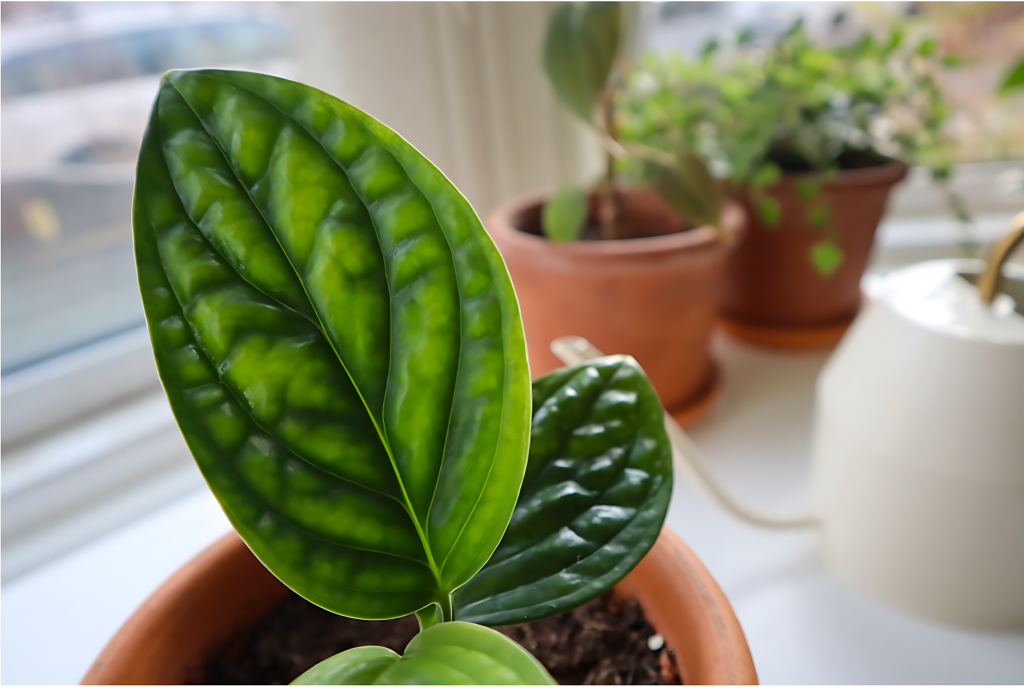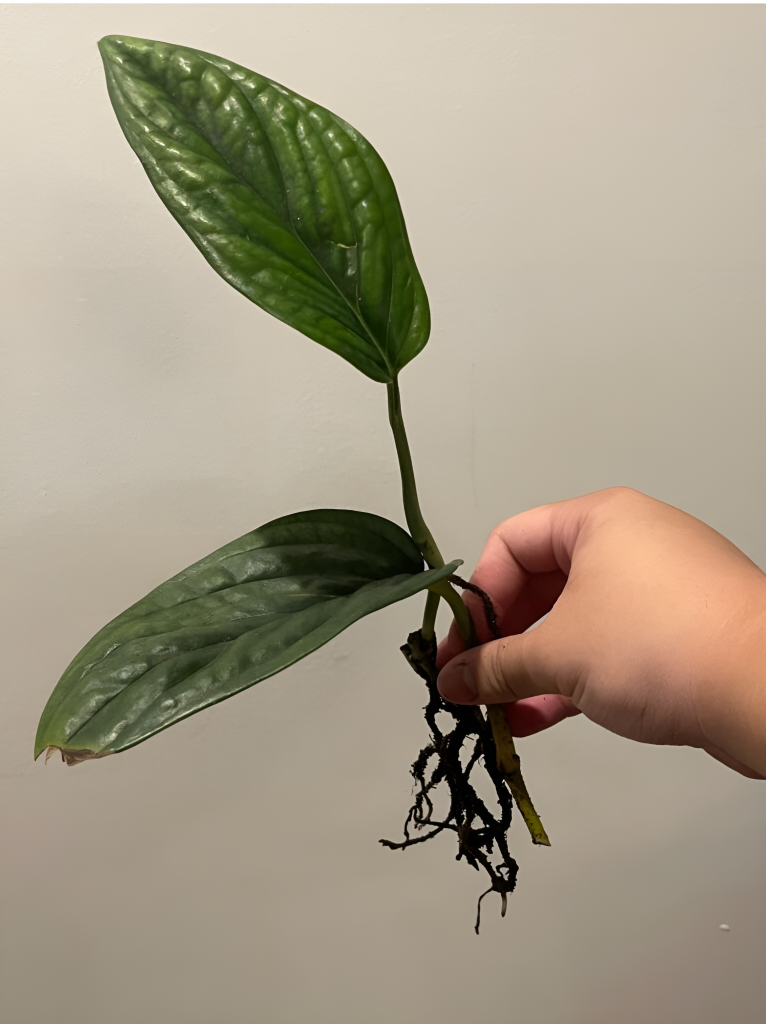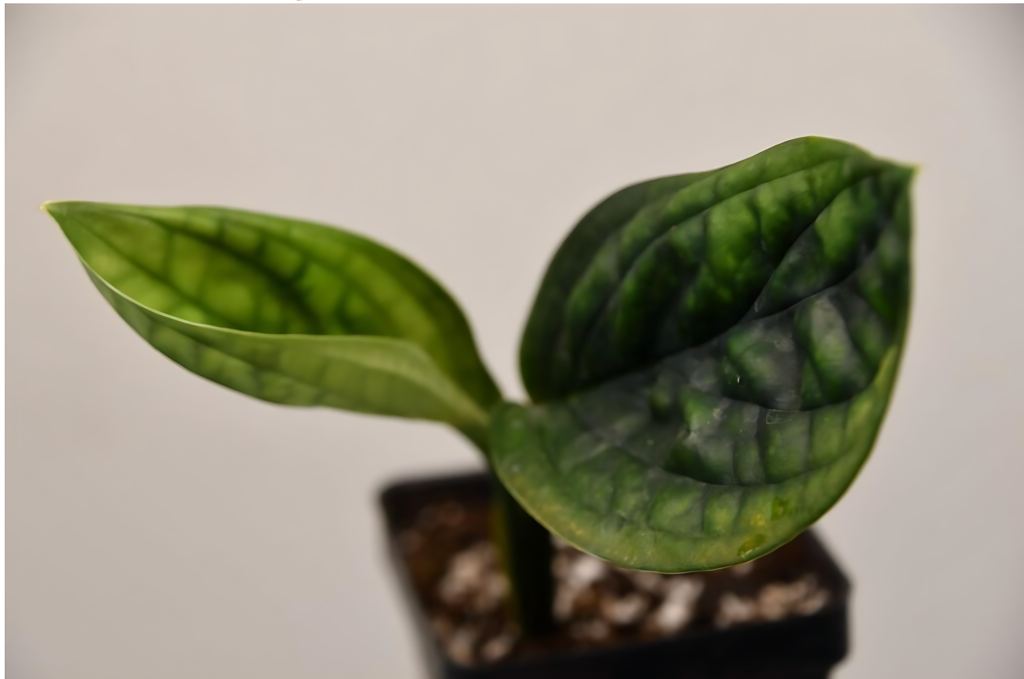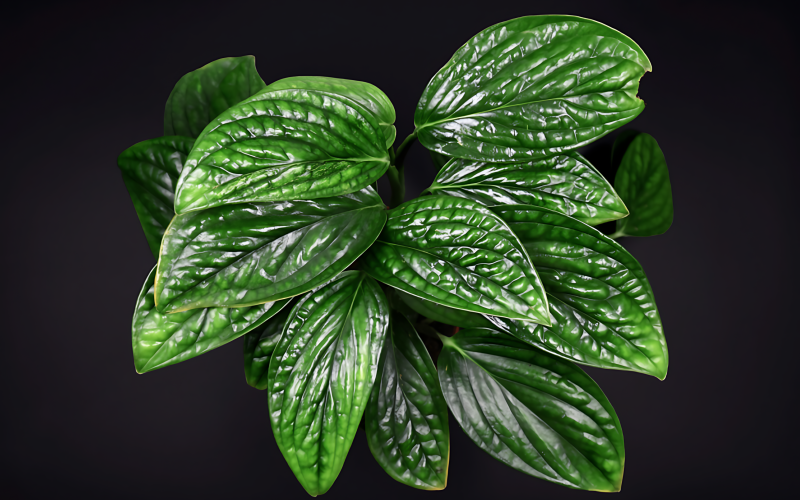With its uniquely textured leaves, Monstera Peru can be tricky to care for. Many plant lovers struggle to keep this exotic beauty thriving, unsure about its light, water, and soil needs.
But don’t worry – we’ve got you covered. This guide will share tips for growing a happy, healthy Monstera Peru.
You’ll learn the ideal light conditions, watering schedule, soil mix, and more. We’ll walk you through everything from basic care to propagation so you can enjoy this stunning plant for years.
Whether you’re a new Monstera Peru owner or looking to improve your care routine, this handbook will give you all the tools you need to succeed.
Understanding Monstera Peru

Monstera Peru is a real head-turner in the plant world. When you first see it, you’ll notice its striking leaves. They’re not your average plant leaves—thick, sturdy, dark green, and glossy.
But what sets them apart is their texture. Each leaf has a puckered surface, almost like it’s been artfully embossed. This gives the plant a very distinctive look and feel.
As for its growth pattern, Monstera Peru is a climber at heart. It grows upwards, sending out vines that can reach impressive lengths.
These vines would latch onto trees in their natural habitat, but they’re happy to crawl up a moss pole or trellis in our homes.
Despite its exotic appearance, Monstera Peru is surprisingly easygoing. It doesn’t demand constant attention or perfect conditions.
This plant is content with moderate light and can tolerate occasional neglect, making it a great choice for busy plant lovers or those just starting their plant parenting journey.
One Thing to Note: Unlike its famous cousin, the Monstera deliciosa, Monstera Peru doesn’t develop holes or splits in its leaves as it matures. Instead, it keeps its unique, puckered look throughout its life, adding a touch of tropical texture to any room it graces.
| Common Name | Monstera Peru |
| Botanical Name | Monstera karstenianum |
| Family | Araceae |
| Plant Type | Perennial, vine |
| Mature Size | 6-8 ft. tall, 12-14 in. wide |
| Native Area | South America |
| Toxicity | Toxic to pets and humans |
Essential Care Guidelines

Caring for Monstera Peru doesn’t have to be complicated. Let’s break down the key elements of light, soil, water, temperature, and feeding to keep your plant thriving year-round.
1. Light Requirements
Monstera Peru thrives in bright, indirect sunlight. A spot near a north-facing window works wonders. If you only have south or west-facing windows, place your plant a few feet away from the window or use a sheer curtain to filter the light.
This plant can tolerate lower light conditions, but it might grow slower. Too much direct sun can cause the leaves to yellow or develop brown, scorched patches.
2. Soil Needs
The right soil mix is crucial for Monstera Peru. These plants love airy, moisture-retentive soil. Mixing one part coco coir, one part orchid bark, and one part perlite works well.
This combination mimics the plant’s natural growing conditions and helps prevent root rot. When repotting, choose a pot with drainage holes to allow excess water to escape.
3. Watering Schedule
Monstera Peru is pretty forgiving when it comes to watering. Its thick leaves store water, making it somewhat drought-tolerant. Wait until the top 2-3 inches of soil dry before watering. It’s better to underwater than overwater these plants.
When watering, give it a good soak until water runs out of the drainage holes. Then, empty the saucer so the plant isn’t sitting in water. As the plant’s growth slows, you’ll likely need to water less frequently during winter.
4. Temperature and Humidity
Monstera Peru prefers warm temperatures between 60 and 85°F. It can tolerate brief periods outside this range, but prolonged exposure to cold can damage the leaves.
The higher the humidity, the better! These plants love humid conditions. If your home is dry, especially in winter, consider using a pebble tray or humidifier. Grouping plants can also help increase humidity.
5. Fertilization
Regular fertilization during the growing season (spring and summer) is key to keeping your Monstera Peru growing strong. Use a balanced, water-soluble fertilizer diluted to half-strength every 3-4 weeks.
Be careful not to over-fertilize, as this can lead to salt build-up in the soil and damage the roots. The plant’s growth slows in fall and winter, so stop fertilizing altogether.
Pruning and Propagation Method for Monstera Peru

Want to shape your Monstera Peru or create new plants? This section covers the ins and outs of pruning for health and aesthetics, plus step-by-step propagation techniques for expanding your collection.
Pruning Techniques
Keeping your Monstera Peru in shape is pretty simple:
- Prune when it starts to look a bit leggy or overgrown.
- Look for stems that are getting too long or sparse. Cut these stems above a node using clean, sharp scissors or pruning shears.
- A node is where a leaf attaches to the stem—it’s also where new growth sprouts. Pruning not only keeps your plant looking tidy but also encourages fuller growth.
Propagation Methods
Monstera Peru can be easily multiplied through propagation, giving you more plants to enjoy or share. There are two main methods: soil propagation and water propagation. Both are effective and simple to do at home.
Soil Propagation
- Select a healthy stem with at least one leaf and node
- Cut below the node with clean, sharp scissors
- Plant the cutting in moist, well-draining soil, burying the node
- Place in bright, indirect light
- Maintain high humidity with a clear plastic bag or humidifier
- Keep soil slightly damp
- After a few weeks, check for root growth by gently tugging the plant
Water Propagation
- Choose a healthy stem with a leaf and node
- Cut below the node with sterilized scissors
- Place cutting in a clear container of water, submerging the node but not the leaf.
- Set in bright, indirect light
- Change water weekly or when it becomes cloudy
- Once roots are 2-3 inches long, transfer to soil
- Gradually acclimate to the regular watering schedule
Potting and Repotting for Monstera Peru

Giving your Monstera Peru the right home is crucial for its growth. We’ll explore how to choose the perfect pot, when to repot, and the best practices for transitioning your plant.
Potting Guidelines
Drainage is crucial when potting Monstera Peru. Choose pots with good drainage holes at the bottom. This helps prevent water from pooling around the roots, which can lead to root rot.
The size of the pot matters, too. Give your plant enough room to grow but not so much that the soil stays wet for too long. An ideal pot is about 1-2 inches larger in diameter than the current one.
Repotting Schedule
Monstera Peru doesn’t need frequent repotting—every 2-3 years is usually sufficient. However, keep an eye on your plant—if it’s growing quickly, you might need to repot sooner.
The best time to repot is during the growing season, spring or early summer. This gives the plant ample time to adjust to its new pot before winter.
Troubleshooting Problems for Monstera Peru

Even the most well-cared-for Monstera Peru can face issues. This section covers common problems like overwatering, underwatering, pest infestations, and practical solutions to keep your plant healthy and thriving.
1. Overwatering
Monstera Peru can suffer from overwatering, which is a common issue. Watch out for yellowing leaves, wilting, black patches on foliage, and leaf drops. These are signs that your plant is getting too much water.
To fix this, let the soil dry completely before watering again. For severely overwatered plants, you might need to remove diseased roots, treat them with a fungicide, and repot them in fresh, well-draining soil.
2. Underwatering
On the flip side, underwatering can also cause problems. Look for curled leaves, dried-out foliage, drooping, crispy edges, and compacted soil.
These signs indicate your plant is thirsty. The solution is simple: establish a consistent watering schedule. Remember, watering deeply but less frequently is better than giving small amounts.
3. Nutrient Deficiency
If your Monstera Peru shows stunted growth or yellowing leaves, it might lack nutrients. To solve this, feed your plant monthly with a balanced, time-release magnesium-rich food.
This will help ensure your Monstera Peru gets all the nutrients it needs to thrive.
4. Flowering Problems
Don’t worry if your Monstera Peru doesn’t bloom indoors – this is normal. These plants rarely flower outside their natural habitat and have no specific blooming season.
Instead of focusing on flowers, focus on maintaining healthy foliage, which is this plant’s main attraction.
5. Pests
Monstera Peru can attract pests like spider mites, scales, mealybugs, and aphids. These sap-sucking insects can damage your plant if left unchecked. Regularly inspect your plant, especially the undersides of leaves.
If you spot pests, treat the plant with insecticidal soap or neem oil. Maintaining good air circulation around your plant can also help prevent pest issues.
Monstera Plants Meaning and Symbolism

Monstera plants, including Monstera Peru, have rich symbolism across cultures. These plants generally represent longevity and positive attributes, making them popular for their looks and symbolic value.
In many cultures, Monstera plants symbolize honor and respect for elders. This connection to wisdom and experience makes them thoughtful gifts for older family members or mentors.
Interestingly, the symbolism of Monstera plants can vary between East and West. In Eastern cultures, they’re often associated with good luck and prosperity. However, in some Western interpretations, their vine-like growth can symbolize suffocation or overwhelming circumstances.
In Feng Shui practice, Monstera plants are believed to bring growth and luck to a space. Their large, vibrant leaves are thought to attract positive energy and promote well-being.
Conclusion
Let’s wrap up our Monstera Peru care guide. We’ve covered a lot, from basic care to troubleshooting common issues.
Remember, this plant is all about balance – the right amount of light, water, and care will keep it thriving.
If you’re new to Monstera Peru, don’t worry if you make a few mistakes. These plants are pretty forgiving, and with a little patience, you’ll soon get the hang of it.
The key takeaways? Bright indirect light, well-draining soil, and moderate watering are your best friends. Watch for pests and adjust your care routine as needed.
With these tips, you’re all set to enjoy your Monstera Peru.
Happy Growing!
Frequently Asked Questions
Is Monstera Peru a Fast Grower?
Monstera Peru is a slow to moderate grower. It doesn’t grow as quickly as some other Monstera species. With proper care, you can expect about 1-2 new leaves per month during the growing season.
Why is Monstera Peru so Expensive?
Monstera Peru is expensive due to its rarity and slow growth rate. It’s not as widely cultivated as other Monstera species, making it harder to find. The unique texture of its leaves also adds to its appeal and price.
Does Monstera Peru Bloom?
Monstera Peru can bloom, but it rarely does so indoors. In its natural habitat, it produces small, unremarkable flowers on a spadix, similar to other Aroids. However, don’t expect to see flowers on your indoor Monstera Peru.











